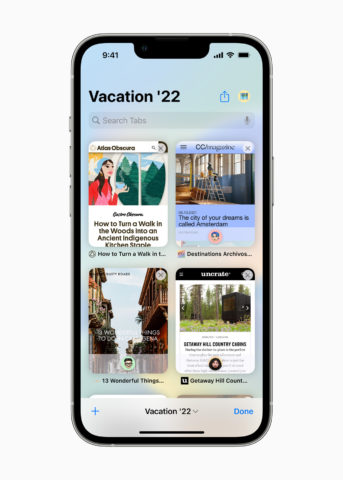Collaboration underpins iOS 16, but you’ll need an iPhone to be a part of it
Computing was once a resolutely solo pursuit for the vast majority of people. Files were occasionally shared on cassettes or disks, but networks of devices were rare and not broadly used. The journey toward internet ubiquity changed all that, increasingly immersing people in apps, games and services that let people work, play and be together. Even so, technology retains a reputation for encouraging isolation – that cliched image of someone staring glassy eyed at a black rectangle – rather than collaboration.
Perhaps with this in mind, Apple updates more and more look to encourage people to spend time together. This is as true if they’re not in the same physical space. SharePlay, for example, allows people to watch films or listen to songs together, wherever each person happens to be. That basic idea is not new – other services have offered the same concept for longer – but ease of use makes Apple’s take compelling, in much the same way you might prefer to fire up FaceTime to talk to a friend rather than set up a conversation on Zoom.
With iOS 16, there’s further emphasis on helping people to be together in this manner. SharePlay is expanding to Messages, which is great for people who live in that app – and ideally suited to younger generations who are more likely to.

Shared Safari tab groups in iOS 16.
Elsewhere, Shared With You will extend to more apps, making it easier for people to find things that have been shared with them. Apple will make it easier to share photos by way of Shared iCloud Photo Library. Shared tab groups in Safari will potentially simplify making complex plans as a group across multiple websites. And there are important changes to vital aspects of your home life, like being able to share physical keys and keep tabs on loved ones through shared health data.
Each of these decisions feels considered. It isn’t about fads, but meaningful ongoing connections – both live and asynchronous. Yet there’s another commonality: it’s all about Apple, and there is a danger in all these features feeling like inward thinking. That came across in the WWDC 2022 keynote, which offered a celebratory few minutes digging into new collaboration features in Keynote, Numbers and Pages. Those moments came across like Apple talking to itself, with features that appeal to the minority who prefer Apple’s office apps, in a wider world where rivals dominate and are therefore more likely to be where even iPhone users head.
This should come as no surprise. After all, Apple isn’t bringing people together in digital spaces out of the goodness of its heart. Deep integration of collaboration features into an operating system is a differentiator, designed to encourage more people to further cement their footprint in Apple’s ecosystem and to draw in friends and family.
Perhaps this is all inevitable when it comes to industry giants, but it should prompt a little caution on the part of Apple – which needs to ensure it casts its collaboration net as wide as possible – and users. Individuals might prize ease of use over complexity, but they must also be aware of what they’re getting – and that, as ever, only people with compatible Apple kit are invited to this particular sharing party.

